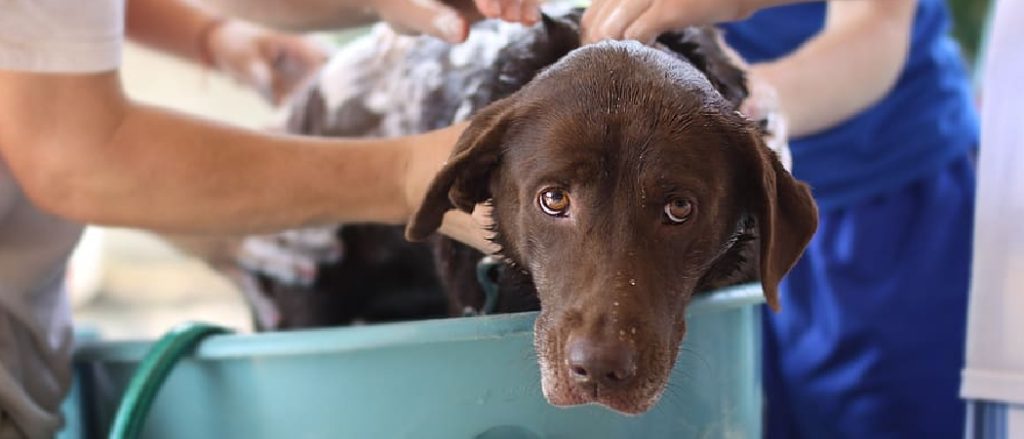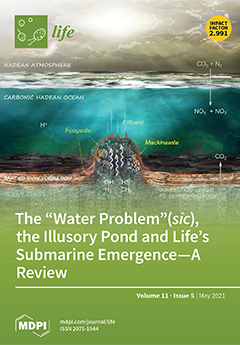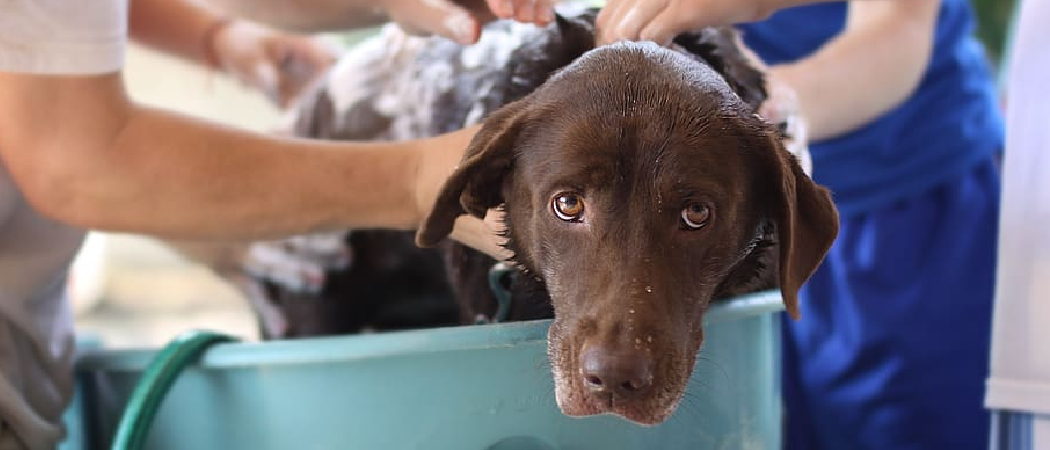Parvo can live in the ground for up to one year, posing a hazard to animals that come into contact with contaminated areas. Parvovirus, commonly known as Parvo, is a highly contagious disease that affects dogs and can be fatal if not treated promptly.

It is primarily spread through contact with infected feces, but can also survive in the environment for extended periods. In fact, Parvo can remain viable in the ground for up to one year, making it essential for pet owners to be cautious when allowing their dogs to roam in areas where infected animals have been present.
Understanding the duration of Parvo’s survival in the ground is crucial to implementing proper sanitation practices and preventing the spread of this dangerous virus. We will explore the lifespan of Parvo in the ground and discuss the necessary precautions to keep our furry companions safe.
Understanding Parvovirus
Welcome to our informative blog post on parvovirus, a highly contagious disease that affects dogs. Parvovirus, also known as canine parvovirus (CPV), is a serious concern for dog owners and veterinarians alike. In this section, we will provide an overview of parvovirus and discuss how it is transmitted.
Overview Of Parvovirus
Parvovirus is a viral infection that primarily affects dogs, especially puppies. It belongs to the Parvoviridae family and is known for its remarkable ability to survive in the environment. The virus can withstand extreme temperatures and remains infectious for extended periods outside a host.
CPV is particularly resistant to common disinfectants, making it challenging to eradicate from contaminated areas. Understanding the lifespan of parvovirus in the ground is crucial for preventing its transmission and minimizing the risk of infection to susceptible dogs.
Transmission Of Parvovirus
Parvovirus is primarily transmitted through fecal-oral contact. It can spread through direct contact with infected dogs or indirectly through contaminated objects in the environment. Puppies are especially vulnerable as they have weaker immune systems and are more likely to ingest the virus.
Here are some common ways parvovirus can be transmitted:
- Direct contact with infected dogs: Dogs can become infected through close contact with infected individuals, such as during sniffing, licking, or playing.
- Indirect contact with contaminated objects: Parvovirus can survive for months in the environment, so dogs can contract the virus by coming into contact with contaminated surfaces, such as food and water bowls, toys, or bedding.
- Ingestion of infected feces: Dogs can ingest the virus by licking or consuming contaminated feces, whether from infected dogs or from the environment.
- Transmission from mother to puppies: Puppies can acquire the virus from their infected mothers, either in utero or through infected milk.
It’s important to note that not all dogs show immediate symptoms after exposure. The incubation period for parvovirus can range from a few days to two weeks, during which dogs can unknowingly spread the virus.
Protecting Your Dog From Parvovirus
Preventing the transmission of parvovirus is crucial to keeping your dog safe and healthy. Here are some proactive measures you can take:
- Vaccination: Ensure your dog receives the recommended vaccinations, including the parvovirus vaccine. Vaccination plays a vital role in building immunity.
- Regular veterinary check-ups: Schedule regular check-ups with your veterinarian to monitor your dog’s health and discuss preventive measures.
- Good hygiene practices: Practice good hygiene when handling your dog or their waste. Clean and disinfect their living area regularly, and always wash your hands thoroughly after handling any dogs.
- Isolation of infected individuals: If your dog is diagnosed with parvovirus, isolate them from other dogs to prevent the spread of the virus.
By understanding how parvovirus is transmitted and taking preventive measures, you can help protect your furry friend from this highly contagious disease.

Credit: brill.com
Survival Of Parvovirus In The Ground
Understanding the survival of parvovirus in the ground is crucial when it comes to preventing the spread of this highly contagious disease. Parvovirus, also known as canine parvovirus or CPV, is a viral illness that primarily affects dogs. It can cause severe gastrointestinal symptoms, leading to dehydration, malnutrition, and even death in puppies and unvaccinated adult dogs.
Factors Affecting Parvovirus Survival
Several factors play a role in determining how long parvovirus can survive in the ground:
| Factors | Description |
|---|---|
| Temperature | Parvovirus can survive longer in cooler temperatures, with the ideal range being 0 to 27 degrees Celsius. Higher temperatures can reduce its survival time. |
| Moisture | Parvovirus thrives in moist environments, so it can persist longer in areas with high humidity or damp soil. Dry conditions can decrease its survival rate. |
| Soil pH | A neutral pH (around 7) favors the survival of parvovirus. Acidic or alkaline soil conditions may inhibit the virus’s ability to persist. |
| Organic matter | Presence of organic material, like feces or decaying vegetation, can enhance the virus’s survival as it provides nutrients for it to thrive. |
| Sunlight exposure | Ultraviolet (UV) radiation from sunlight can help inactivate and kill parvovirus. Thus, areas with direct sunlight exposure may have a shorter survival time for the virus. |
Duration Of Parvovirus Survival In Different Settings
The survival time of parvovirus in the ground can vary depending on the specific setting:
Outdoor Environments
In general, parvovirus can survive in the ground outdoors for several months to over a year under favorable conditions. However, it’s important to note that the virus’s infectivity decreases over time, and thorough cleaning and disinfection can help reduce the risk of transmission.
Indoor Environments
Parvovirus can also persist in indoor environments, especially on surfaces with high organic matter, such as carpets, bedding, or furniture. Regular cleaning and disinfection of these areas are vital to prevent the virus’s survival and further transmission.
Sheltered Areas
Sheltered areas like kennels or dog runs can provide a conducive environment for parvovirus survival. Due to limited exposure to environmental factors, such as sunlight and temperature fluctuations, the virus may persist for extended periods, posing a significant risk to susceptible animals.
Understanding the factors influencing parvovirus survival and the duration it can persist in different settings is essential for implementing effective preventive measures. Regular cleaning, disinfection, proper waste disposal, and vaccination are critical in controlling the spread of this highly contagious disease.
Remember, prevention is key when it comes to parvovirus, so ensure your pets are up to date with their vaccinations and maintain a clean environment to minimize the risk of infection.
Preventing Parvovirus Contamination
Prevention is key when it comes to protecting your furry friends from the potentially lethal Parvovirus. This highly contagious virus can survive in the environment for months, making it important to take proactive measures to prevent contamination. By implementing proper disinfection and cleaning practices and following precautions as a dog owner, you can significantly decrease the risks associated with Parvovirus. If you want to know more about how long does parvo live in the ground? unveiling the survival secrets, read it https://petsical.com/does-parvo-live-on-concrete/ .
Disinfection And Cleaning Practices
Effective cleaning and disinfection are essential to eliminate the Parvovirus from the environment. The virus is resistant and can survive on surfaces such as floors, cages, bowls, and toys. To ensure thorough disinfection, consider following these practices:
- Use an appropriate disinfectant: Choose a disinfectant that is effective against Parvovirus. Look for products that contain bleach or quaternary ammonium compounds (QACs) and follow the instructions on the label for proper dilution and contact time.
- Clean before disinfecting: Remove any visible dirt, feces, or organic matter from the surfaces before applying the disinfectant. This helps to enhance the efficacy of the disinfection process.
- Apply the disinfectant correctly: Thoroughly wet the surfaces with the disinfectant solution and allow it to sit for the recommended contact time. This ensures the virus is effectively killed.
- Prioritize high-risk areas: Pay special attention to areas where infected dogs have been, such as kennels, grooming tables, and examination rooms. These areas should be cleaned and disinfected regularly to reduce the risk of contamination.
- Follow a regular cleaning schedule: A consistent cleaning schedule is crucial to maintain a clean and safe environment. Develop a routine that includes daily cleaning of surfaces and frequent washing of bedding, toys, and other items used by your dog.
Precautions For Dog Owners
As a responsible dog owner, you play a vital role in preventing the spread of Parvovirus. By taking these precautions, you can minimize the likelihood of your dog coming into contact with the virus:
- Vaccination: Ensure that your dog is up-to-date on vaccinations, including the Parvovirus vaccine. Regular vaccinations help strengthen the immune system and provide protection against the virus.
- Avoid high-risk areas: Steer clear of places where Parvovirus may be present, such as dog parks, public spaces, and areas with a high population of unvaccinated or stray dogs. These environments increase the risk of transmission.
- Practice good hygiene: Wash your hands thoroughly with soap and water after handling other dogs or coming into contact with potentially contaminated surfaces. This helps to prevent the spread of the virus from one location to another.
- Isolate infected or unvaccinated dogs: If you have multiple dogs, separate any infected or unvaccinated dogs from healthy ones to minimize the risk of transmission. Consult with your veterinarian for guidance on proper isolation measures.
- Dispose of waste properly: Promptly and properly dispose of your dog’s waste to prevent the spread of Parvovirus through contaminated feces. Use disposable bags and ensure the waste is disposed of in designated areas.
/1905_Wallace_A237.1_431.jpg)
Credit: darwin-online.org.uk

Credit: www.mdpi.com
Frequently Asked Questions For How Long Does Parvo Live In The Ground
How Long Can Parvo Live In The Ground?
Parvo can survive in the ground for up to a year, making it crucial to properly disinfect contaminated areas to prevent the spread of the virus. Regular cleaning with a bleach solution and keeping unvaccinated pets away from infected areas can help minimize the risk of transmission.
Is Parvo Hard To Kill In The Ground?
Yes, Parvo is highly resistant and can be difficult to kill in the ground. The virus can withstand extreme temperatures and harsh environmental conditions, making it necessary to use strong disinfectants like bleach to effectively eliminate the virus from the environment.
What Precautions Should I Take For Parvo-infected Areas?
When taking precautions in Parvo-infected areas, it is important to limit access for unvaccinated pets, as the virus can survive for a long time in the ground. Disinfecting the area with a bleach solution, washing hands thoroughly, and practicing good hygiene practices can help prevent the spread of Parvo to other pets.
Can You Catch Parvo From The Ground?
While it is highly unlikely to directly contract Parvo from the ground, the virus can survive in the environment for extended periods of time. It can be transmitted to pets through direct contact with contaminated surfaces or infected animals. Vaccination and proper hygiene practices are essential in reducing the risk of Parvo infection.
Conclusion
Parvo can survive in the ground for a long time, posing a risk to your pets. By understanding how long it can live in different environments, you can take necessary precautions to prevent its spread. Regular cleaning, disinfection, and avoiding contact with infected animals are key to keeping your pets safe.
Remember, prevention is always better than treatment when it comes to this deadly virus. Stay informed and take necessary steps to ensure your furry friends are protected.


